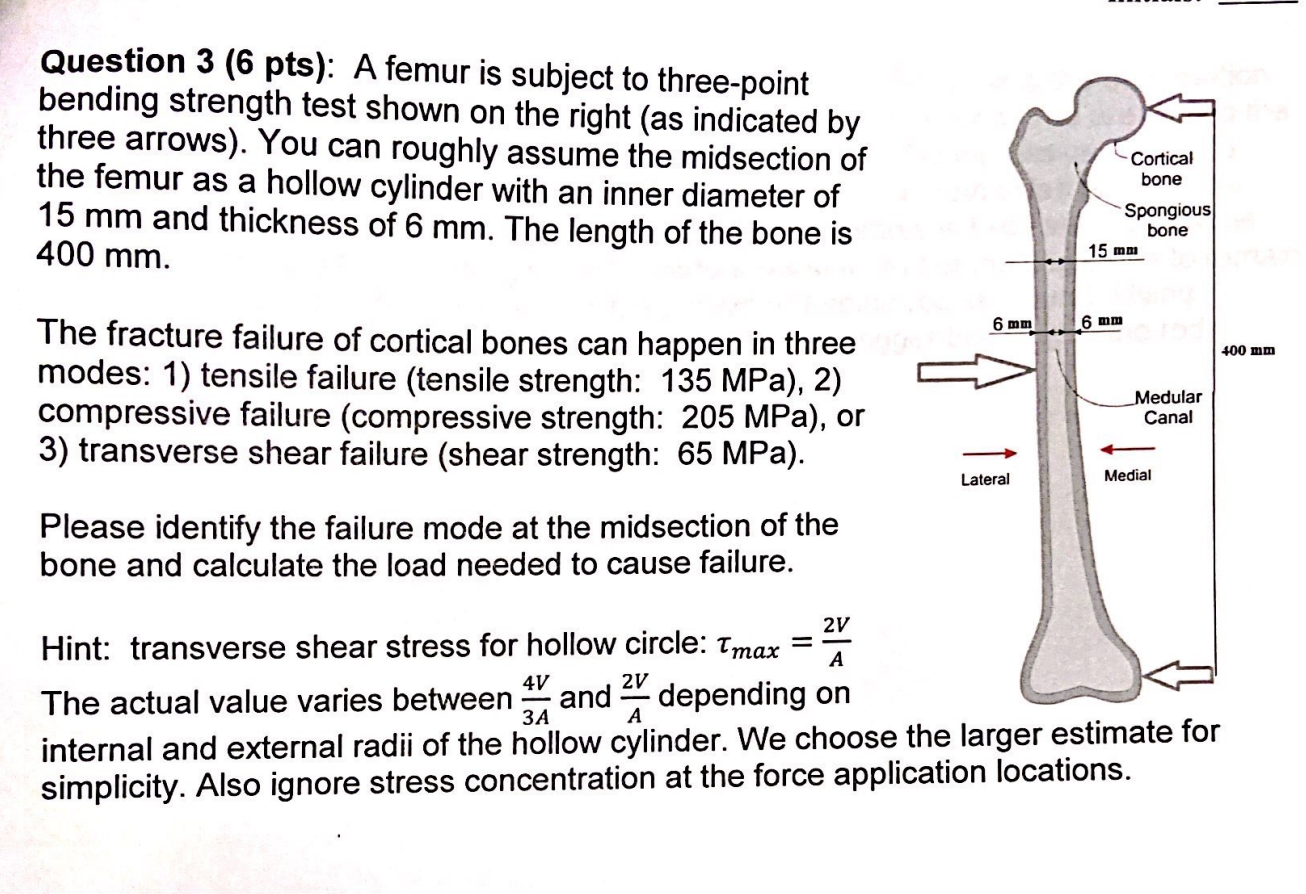The hollow cylinder in a bone is called the medullary cavity, which contributes to the bone's strength. The medullary cavity is a key component of bone structure, as it serves as a hollow cylinder within the bone.
This hollow space is primarily composed of compact bone, creating a strong and sturdy structure. The medullary cavity plays a crucial role in the support and protection of the bone, allowing it to withstand external forces and maintain its structural integrity.
The presence of this hollow cylinder also serves a practical function by reducing the weight of the bone. Through a process known as bone remodeling, the medullary cavity can adapt and change in response to the body's needs, such as during growth or healing processes.

Credit: www.chegg.com
Bone Anatomy
Types Of Bones
Bones are classified into five main types based on their shape and function:
- Long Bones
- Short Bones
- Flat Bones
- Irregular Bones
- Sesamoid Bones
A long bone is mostly composed of compact bone, which provides strength and support. Within the compact bone lies a hollow cylinder called the medullary cavity. This cavity contains yellow or red bone marrow, responsible for blood cell production and fat storage.
The outer layer of the long bone is called the periosteum, a tough membrane that protects the bone and facilitates bone growth and repair. Beneath the periosteum, we find the compact bone, giving the bone its strength and structure.
Within the compact bone are narrow channels called canaliculi, which allow blood vessels and nerves to travel through the bone, nourishing the bone cells and enabling communication throughout the skeletal system.
At the ends of long bones, we have epiphyses, which are covered in articular cartilage. This cartilage provides a smooth surface for joints, reducing friction and enabling smooth movement.
Connecting the epiphyses to the main bone shaft is the metaphysis. This region plays a crucial role in the growth and development of bones, especially during puberty.
In summary, the structure of a long bone, with its compact bone, medullary cavity, periosteum, canaliculi, epiphyses, and metaphysis, forms a remarkable framework that allows us to move, protect vital organs, and support our body.

Credit: www.chegg.com
Structure Of A Long Bone
In understanding the anatomy of a long bone, it is essential to comprehend the various components that contribute to its strength and structure. The long bone consists of the diaphysis, epiphysis, and medullary cavity, each playing a crucial role in ensuring the bone's functionality. Let's delve into the specifics of each component to gain a deeper understanding of the structure of a long bone.
Diaphysis
The diaphysis is the central shaft of the long bone, consisting of a thick, hollow cylinder responsible for providing strength and support. It is primarily composed of compact bone, featuring a sturdy structure that enables the bone to withstand pressure and movement. The diaphysis plays a vital role in weight-bearing and locomotion, integrating with the surrounding components to maintain the bone's integrity.
Epiphysis
The epiphysis, located at the ends of the long bone, serves as a crucial element for articulation and joint function. Composed of spongy bone covered by a layer of compact bone, the epiphysis facilitates smooth movement and joint flexibility. Additionally, it contributes to the overall strength of the bone, allowing for effective transmission of forces and support during physical activities.
The medullary cavity, located within the diaphysis, is a hollow space that contains bone marrow and functions as a site for red blood cell production and storage. This cavity plays a pivotal role in blood cell formation and serves as a reservoir for essential nutrients, contributing to the bone's overall metabolic functions and regenerative capacity.
Medullary Cavity
The medullary cavity, a hollow cylinder in bones, plays a crucial role in strengthening the bone structure. Its presence helps maintain the bone's overall strength and reduces its weight, aiding in optimal functioning of the skeletal system.
Composition
The medullary cavity, also known as the marrow cavity, is a crucial part of the bone structure. It is a hollow cylinder that runs through the center of long bones such as the femur (thighbone) and humerus (upper arm bone). This cavity is lined with a thin layer of connective tissue called the endosteum. The medullary cavity is filled with bone marrow, which can be classified into two types: red marrow and yellow marrow. Red marrow is responsible for the production of blood cells and is found primarily in the medullary cavity of young individuals. As we age, some of the red marrow is replaced by fatty yellow marrow, which serves as a storage reserve for adipose tissue.
Functions
The medullary cavity serves several important functions within the bone.
1. Red Blood Cell Production: The red marrow within the medullary cavity is the primary site for hematopoiesis, the production of red blood cells, white blood cells, and platelets. Red blood cells are essential for delivering oxygen to tissues and removing carbon dioxide, while white blood cells are vital for immune defense.
2. Storage of Adipose Tissue: The yellow marrow, occupying the medullary cavity of long bones, contains adipocytes or fat cells. These cells store energy in the form of lipids, providing a reserve of energy for the body when needed.
3. Calcium Storage: Bones act as reservoirs for calcium, which is necessary for various physiological processes such as muscular contraction, nerve impulse transmission, and blood clotting. The medullary cavity, filled with bone marrow, plays a significant role in maintaining calcium homeostasis.
4. Weight Reduction: The hollow nature of the medullary cavity contributes to the overall lightness of long bones, making them more mobile and allowing for easier movement. In conclusion, the medullary cavity, a hollow cylinder running through the center of long bones, is filled with bone marrow and plays a critical role in maintaining bone health and overall body function.
From red blood cell production to energy storage and calcium regulation, its functions are diverse and vital for our well-being.

Credit: byjus.com
Conclusion
Understanding the hollow cylinder in bones is crucial for our overall bone health. Remember that the hollow cylinder, called the medullary cavity, provides strength without adding unnecessary weight to the bone structure. By comprehending this, we can take proactive steps to maintain strong and healthy bones for a lifetime.







0 Comments